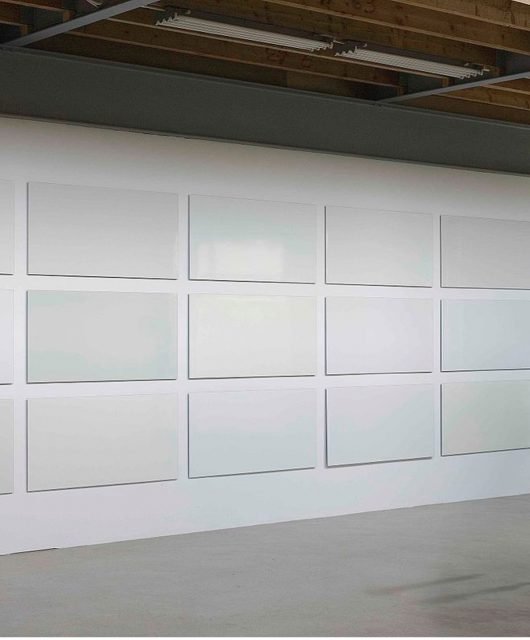5+1 Brand Design Trends To Watch In 2020
Trends always start small – then they gather momentum, turning into movements with the power to transform an industry or society itself. Yet the trends that stand the test of time are not born out of whims or people jumping on bandwagons – but new directions made available by new technologies. They break down barriers and open doors to what, in a few years, will soon become the norm.
I’ve had the opportunity to observe the rising significance of many key trends over the course of this past year – through my day-to-day work at this agency, our interactions with clients and partners, and my participation in the judging panels for leading creative contests. These trends have the potential to define our work in 2020.
All of them have arisen in response to the major challenge faced by many brands today: mastering the increasing diversity of touchpoints, target groups, and use cases, while simultaneously maintaining control over their brand image. Brands tend to take one of two fundamentally different approaches to this problem: Either they offer greater flexibility and are open to creative design experiments, or they concentrate on the essentials to reduce the number of design elements in use.
This decision stands at the core of what follows – and is reflected in the five trends I believe will grow in significance over the coming year.
Smart Design
Following a spark of initial curiosity, generative design and flexible visual systems are currently experiencing a renaissance, as programmatic creation is already visible on the horizon. Many aspects are still in the experimental phase or only really employed in small niche areas, but the trend is clear. Everyone in our industry must answer the question of how design processes can be modified and personalized with the aid of smart algorithms. It is only with the help of such technologies that we can continue to enjoy strong success. This trend will increasingly see designers morph into the curators of work performed by machines.
Playful Branding
The times have passed when brands were only identifiable by a strong logo that was always identical. Figurative marks can step into the background, or even dramatically transformed in both shape and color. Dior and Nike are leading the way: Sometimes the only consistent element is the brand name itself, while the shape and color of the logo will vary. There’s a move away from what was once a rigid adherence to one consistent logo whatever the situation. And while logos lose their significance and brand recognition factor, other corporate design elements – such as the illustrative style, icons, sound, and motion – are stepping into the fore, becoming the foundation stones of complete design systems.
Honest Minimalism
Aside from the trend toward enriching corporate design systems with new elements such as patterns or illustrations, there is also a trend in the opposite direction: a radical reduction in design elements to the bare minimum. The result is often a purely typographic solution. Color is used more sparingly. The layout is radical in its simplicity. The design itself is minimalistic – in keeping with the values of honesty, transparency, and authenticity. Design shouldn’t push its way forward or make false promises. Nothing matters except that which is real and genuine. Fashion and cosmetics brands such as Ninety Percent and Henua Organics are prime examples.
Anti-Design
But why stop there? We can be even more radical by breaking every known branding rule. Brands can also choose to have no logo at all, and instead focus on emotionalizing the user experience. Their communication channels are consciously simplistic and unpolished. Instead, they focus on what matters: the content. This makes the brand appear trustworthy and their messages factual.
Imperfection
The idea of perpetual beta – keeping ideas in a constant state of development – can be found in designs that have been consciously left in an unfinished state. Rather than checking how an idea works in every specific scenario, companies may prefer to go live at 90% completion. They test the idea in the wild and resolve potential issues with the next update. Why think yourself to death when you can just see if it works? This attitude can also be translated into a clear design language, with the inclusion of content that is deliberately out of alignment with the grid or underproduced.
Not a trend: Sustainability
Then there’s another topic that will become increasingly important in the coming years, though I don’t really see it as a trend. It isn’t something transitional, that comes for a while only to later disappear – but a lasting consequence of a societal shift.
Sustainability is the biggest issue of our time. It’s an issue every brand and every designer must confront, and one to which consumers all over the world are highly sensitized. There is a growing expectation for companies to take consistent steps toward sustainable solutions – and as designers, our role is to support them on this journey. For example, we present ways for our clients to optimize their use of resources across all areas of design and improve their production processes.
However, we also understand the communicative challenges associated with this transition and the impact this has on a brand’s positioning in their market. I am a strong believer that every company will have to fully embrace this fundamental transition toward sustainable processes over the next few years, and across all business areas. The pioneers will be the ones to define their market. Reluctant followers who ignore the obvious signs of the times risk falling into oblivion.





